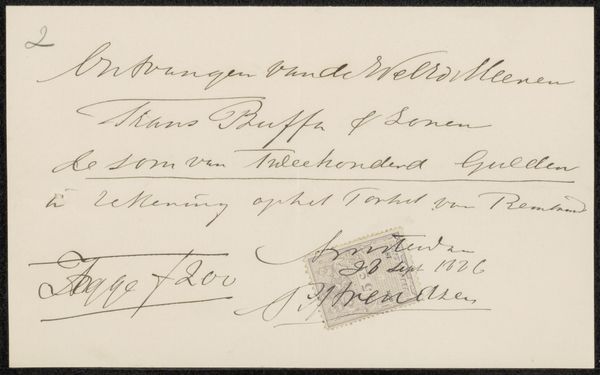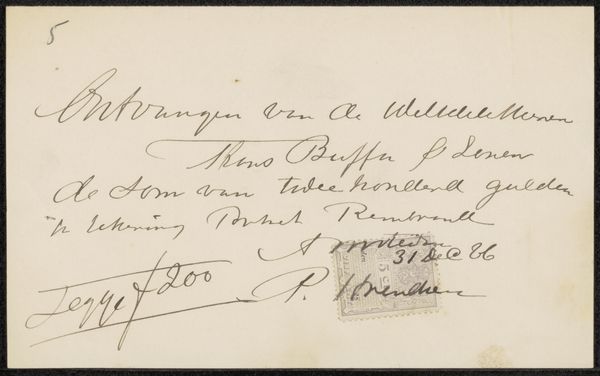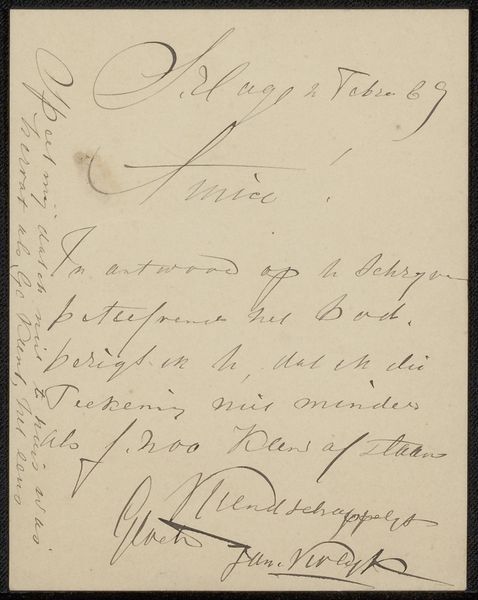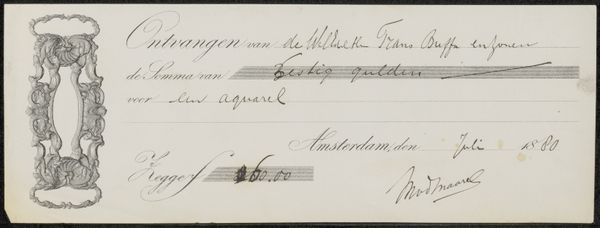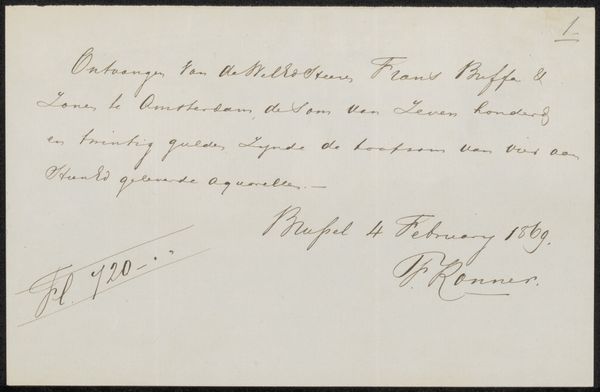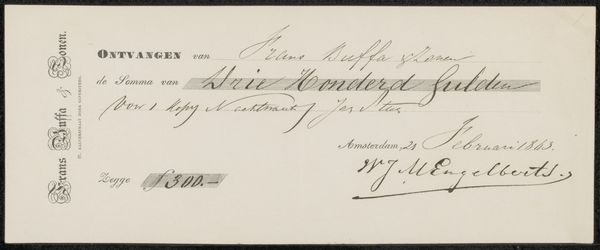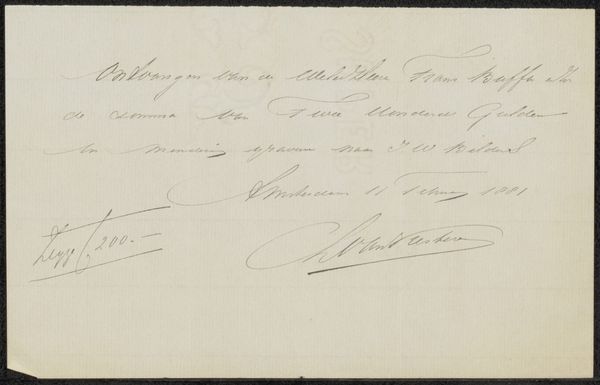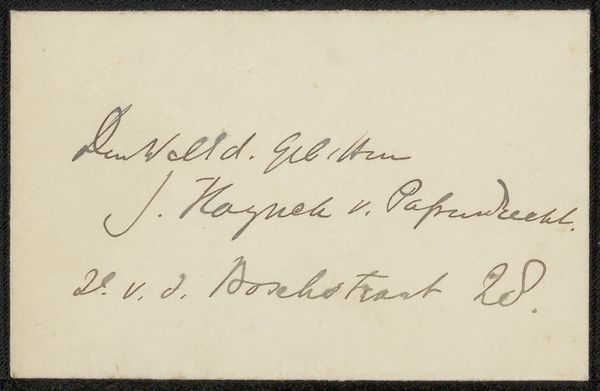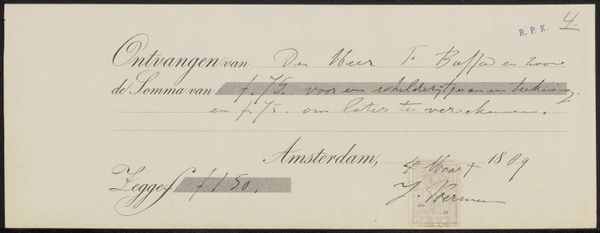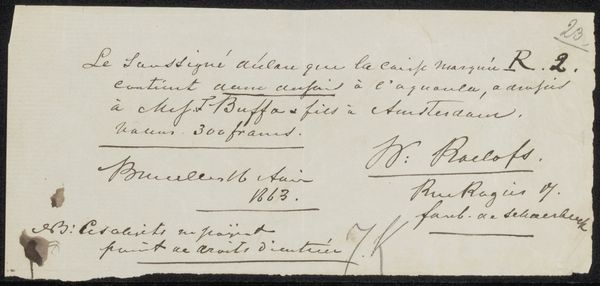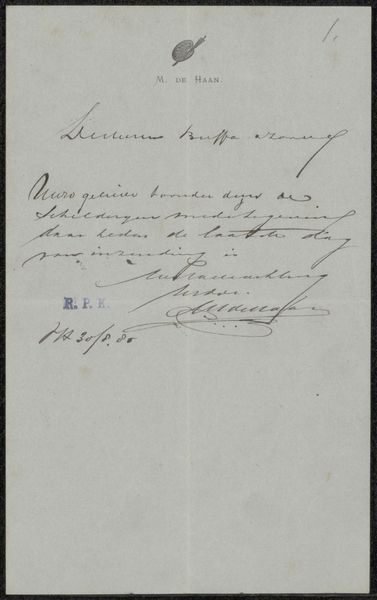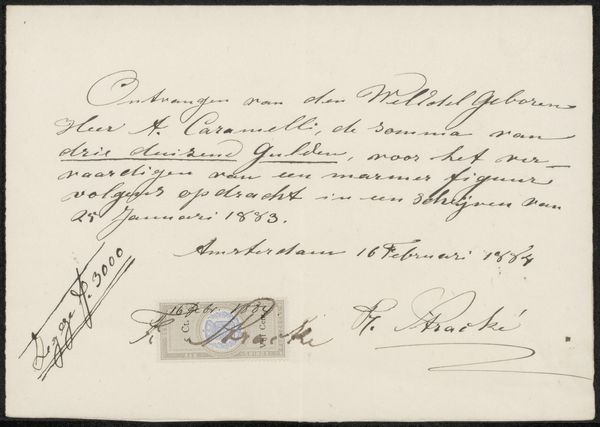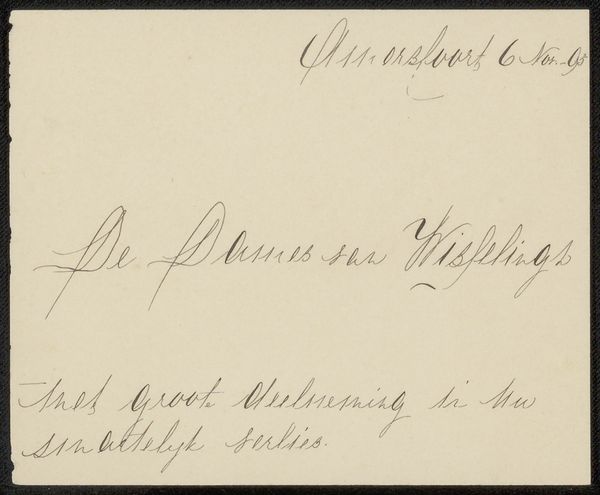
drawing, graphic-art, paper, typography, ink, pen
#
drawing
#
graphic-art
#
script typography
#
hand-lettering
#
old engraving style
#
hand drawn type
#
hand lettering
#
paper
#
typography
#
ink
#
hand-drawn typeface
#
pen-ink sketch
#
thick font
#
pen work
#
pen
#
calligraphy
#
small lettering
Copyright: Rijks Museum: Open Domain
Editor: This is "Ontvangstbewijs aan Petrus Johannes Arendzen," likely from 1886, created by Frans Buffa en Zonen. It appears to be a receipt, rendered in pen and ink. It's intriguing to see typography treated as an art form; what do you see in this piece that I might be missing? Curator: Well, considered from a historian's perspective, the value here lies in the social and economic context it reveals. This isn’t just about aesthetics. It's a document related to art dealing and the art market of the late 19th century. The receipt acknowledges payment for a "drawing plate Rembrandt," indicating an active trade in older master prints. How do you think the art market influenced artistic production at the time? Editor: That's a fascinating point! It makes me wonder how many similar transactions happened and if they impacted the creation of new artworks by contemporary artists, possibly driving them to emulate the style of renowned masters. Curator: Precisely! The reference to Rembrandt connects this transaction to a broader narrative of artistic legacy and the commodification of art history. These kinds of receipts helped solidify artistic value, right? Editor: It definitely makes the transaction tangible. The calligraphy adds an almost performative element. A functional object with style. It gives a glimpse into the social circles that existed then. I learned a lot; thanks! Curator: Indeed, examining even the most seemingly mundane artifacts can unlock rich insights into the past. This transaction reveals not only economic exchange but also the social and cultural values attached to art at the time. It's a small piece of a larger puzzle.
Comments
No comments
Be the first to comment and join the conversation on the ultimate creative platform.
